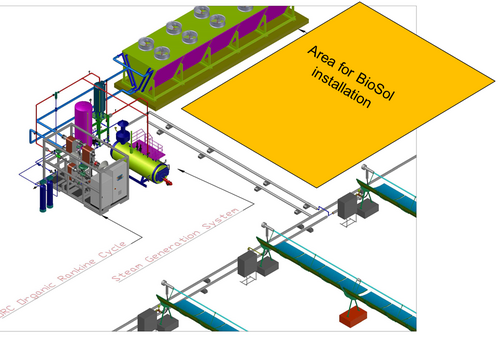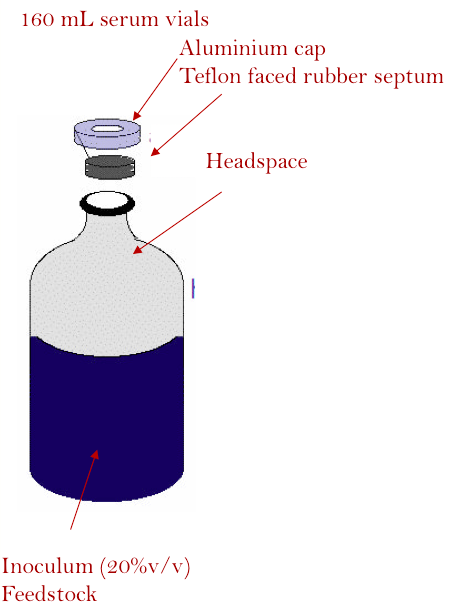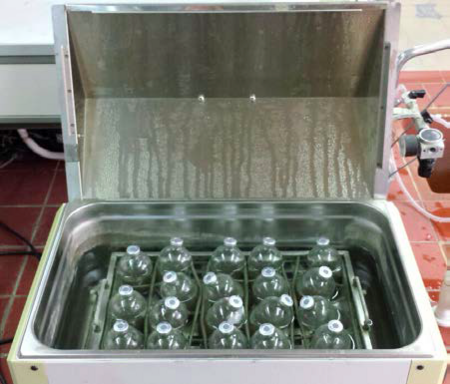Results
Work package 2
TGA/DSC, FTIR and pyrolysis GC-MS experiments with olive mill residues in air and inert atmosphere were conducted with three samples (from Spain, France and Tunisia). The Spanish sample (two-phase) came from a different olive oil extraction process than the samples from France and Tunisia (three-phase). The Spanish sample showed a similar, but slightly different behavior during the conducted experiments. The Spanish sample had a lower content of residual oil, probably due to hexane extraction.
Experiments with Spanish sample were conducted in a gasification pilot plant (100 kW). Experiments were performed on two consecutive days and the Production of syngas with good quality was successful.
Work package 3
Tests of electricity production with the solar field and the ORC turbine, which will be part of the hybrid system, were conducted successfully at ENIT within the REELCOOP project. Installation of the prototype of the gasifier was prepared at ENIT and the prototype is available for transport from France to Tunisia. The biomass for the demonstration has to be properly prepared, preferably in the form of pellets or briquettes.

Work package 4
A template for required data for the Life Cycle Assessment (LCA) is under preparation (CIEMAT). The full assessment of the BIOSOL prototype can only be carried out after the installation and first tests.
Work package 5
Several technologies and process dealing with anaerobic digestion for biogas production were exchanged between CDER and LBEET laboratory at University of Patras. Which gives the opportunity to exchange information and protocols about biogas production assessment.
Experiments were conducted for anaerobic digestion of cow wastes (farm wastes), in thermophilic mode in the laboratory of CDER. The main purpose was the startup of a new 50L biogas digester to check its functionalities. Additionally, anaerobic digestion of municipal fermentable wastes from landfill was conducted. It resulted in the production of 60L of biogas/kg of raw material.
Information about the state of the art of Organic Rankine Cycle was gathered by literature research. Additionally, researchers from CDER, working on biogas and CSP, spend a short stay at ENIT. They got the opportunity to improve their knowledge about hybrid system biogas/CSP and to understand the pilot Biogas/CSP performance. The system is located in ENIT, in the frame of REELCOOP project.
To make a choice about the area, which should be taken into account for the concept study of a hybrid system in Algeria, the waste potential in different regions had to be estimated. Several contacts and exchanges have been made with National Wastes Agency (AND) to get data, in the frame of regional waste assessment.
A master thesis on the subject « energetic valorization of municipal wastes, socio-economic and environmental aspects in the region of Algiers » is supervised by CDER. It is dealing with a case study of the region of Algiers, the capital. Wastes energetic potential, socio-economic and environmental assessments are involved. This work will allow the constitution of preliminary elements to environmental aspects study of project part.
The results recently obtained, from AND, included to direct radiation assessment permit to identify a potential site for the hybrid system CSP/biogas concept analysis.
The potentialities of the region are:
- Good solar potential,
- Availability of sufficient wastes amount from landfills,
- Arid climate,
- Activities: Livestock, construction materials, food industry, textile and tanning industry,
mines (clay, sand, limestone……).
University of Patras has conducted a series of experimental lab tests regarding the biochemical methane potential (BMP) of olive mill wastewater (OMW), taking into account the inherent specificities of the country.
More specifically, two sets of experiments with raw and centriguged OMW were conducted with the use of UASB sludge and WWTP at mesophilic conditions (37°C) and additional two sets were conducted with raw and centriguged OMW with the use of UPBR sludge and WWTP sludge at thermophilic conditions (55°C).
Biochemical Methane Potential (BMP) is is an experimental procedure developed to determine the methane production of a given organic substrate during its anaerobic decomposition. The BMP assay has proved to be a relatively simple and reliable method to obtain the extent and rate of organic matter conversion to methane. The information provided by BMP is valuable when evaluating potential substrates and optimizing the design and operation of anaerobic digesters.
The BMP study of these agro-industrial organic wastes were performed in duplicates, whereas two additional bottles containing only inoculum were included to account for background (i.e. endogenous) methane production (blank). Briefly, the experimental procedure includes known amounts of substrate and active anaerobic inoculum (20% v/v), that are added to 160-mL serum bottles. Nutrients and vitamins for mixed anaerobic cultures are also added. The bottles are maintained at constant temperatures (mesophilic or/and thermophilic), whereas pH and biogas production are measured.


It should be mentioned that, physicochemical characterization of all substrates has been performed prior to BMP tests.
Work package 6
The tasks in WP6 were adapted according to budget reduction in Jordan. For capacity building at GJU the installation of a combustion lab is prepared and important equipment for analysis of biomass combustion is purchased.
Data about bioenergy potential and in particular about waste of olive oil production were collected by GJU. Simulations with combustion model for olive oil residues were performed in Aspen PLUS (GJU). A numerical model to evaluate CSP/biogas technical performance was developed (INEGI).
Scientists of GJU visited DBFZ in Germany to continue the work on the Aspen PLUS simulation and discuss about the work in the project.
Work package 7
Dissemination and communication, lectures for the existing e-learning platform concerning energy generation from biomass by biogas production and gasification are being prepared.